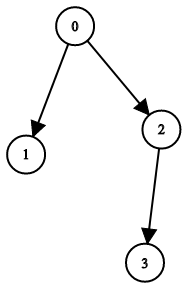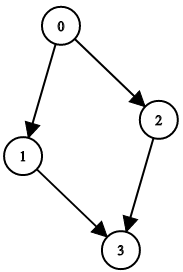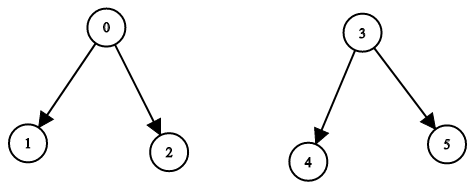题目描述
You have n binary tree nodes numbered from 0 to n - 1 where node i has two children leftChild[i] and rightChild[i], return true if and only if all the given nodes form exactly one valid binary tree.
If node i has no left child then leftChild[i] will equal -1, similarly for the right child.
Note that the nodes have no values and that we only use the node numbers in this problem.
Example 1:

Input: n = 4, leftChild = [1,-1,3,-1], rightChild = [2,-1,-1,-1] Output: true
Example 2:

Input: n = 4, leftChild = [1,-1,3,-1], rightChild = [2,3,-1,-1] Output: false
Example 3:

Input: n = 2, leftChild = [1,0], rightChild = [-1,-1] Output: false
Example 4:

Input: n = 6, leftChild = [1,-1,-1,4,-1,-1], rightChild = [2,-1,-1,5,-1,-1] Output: false
Constraints:
1 <= n <= 10^4leftChild.length == rightChild.length == n-1 <= leftChild[i], rightChild[i] <= n - 1
解析
对于我这个小白来说,我觉得这是一道好题,让我学会了如何区分树与图。以下是题解中很简洁的一种做法。即利用树中不会有入度为2的结点,且如果这是一棵树而不是森林的话,入度为0的结点(根节点)只能有一个。
class Solution {
public:
bool validateBinaryTreeNodes(int n, vector<int>& leftChild, vector<int>& rightChild) {
vector<int> inDegree(n,0);
int count0=0,count2=0;
for(int k:leftChild) if(k!=-1) inDegree[k]++;
for(int k:rightChild) if(k!=-1) inDegree[k]++;
for(int i=0;i<n;i++) {
if(inDegree[i]==0) count0++;
else if(inDegree[i]==2) count2++;
}
return count0==1&&count2==0;
}
};
